How AFL clubs are making money on projects and businesses that have nothing to do with football
In 2022 one AFL club made $1.2m in interest alone. Others are snapping up property, child care centres and gyms. See how clubs are making money – and plan to make even more – outside of footy.
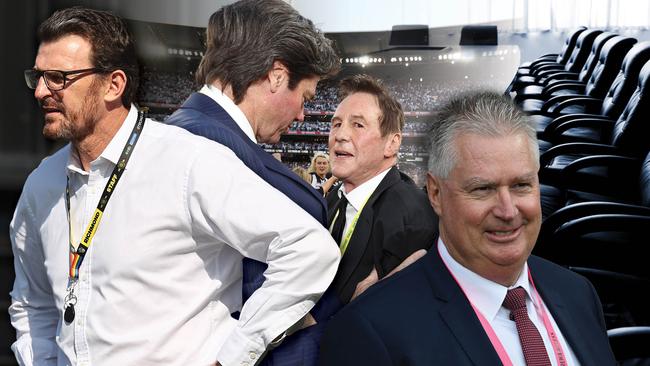
AFL
Don't miss out on the headlines from AFL. Followed categories will be added to My News.
A buzzword echoing around AFL boardrooms is set to transform the financial models of several clubs – “revenue diversification”.
Some have started cracking the commercial world, ensuring the future of their football clubs becomes less about football.
Gold Coast enshrined the strategy in last year’s financial papers.
One of the club’s short-term objectives was “commencement of non-football diversified revenue streams” … and one of its long-term objectives was to “develop” those streams.
In March the club opened a creche called Kool Beanz SUNS at Metricon Stadium, which has 203 places including 30 specifically designed for kids with autism.
Expansion is on the cards with up to three more centres in Mackay, including one that will open later this year.
Multiple rival clubs are drawing up plans to replicate that business model.
As Brisbane Lions’ boss Greg Swann said: “Everyone’s diversifying – everyone’s looking for alternative revenues now”.
The Lions own 50 per cent of a new high-end wellness centre that boasts a state-of-the-art gym floor, five purpose-built group fitness studios, swimming pools, infra-red saunas and float tanks.
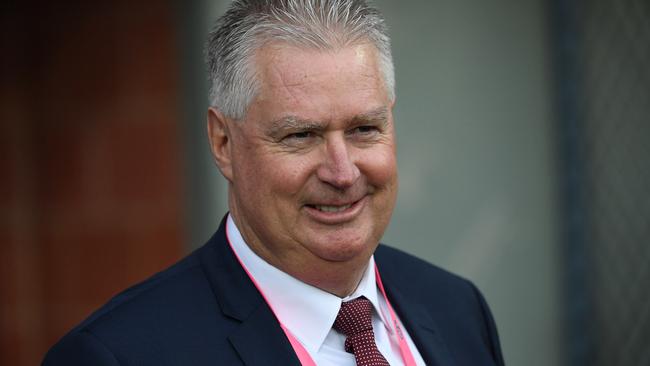
Members say Total Fusion is as swanky as a nightclub – and the kicker is if you come to the Lions’ franchise in Springfield there’s a chance you will be working up a sweat alongside one of Brisbane’s AFL or AFLW stars.
A high-placed source believed the Lions had also secured a provision to run a child care business out of Springfield … but that it had not been activated yet.
The AFL’s top brass was rapt that the Lions might have locked in two commercial income streams at their new football base because it meant Brisbane had broken new ground.
The $80 million facility now have a sinking fund, which means in seven or eight years those funds could be accessed to upgrade areas that have lost their shine.
The AFL has long been frustrated by clubs being gifted world-class and predominantly government-funded facilities without even exploring how to attach a sinking fund.
Western Bulldogs are also expected to embed a business opportunity into their Whitten Oval redevelopment.
New event spaces designed for level three will be open to host functions, while the Dogs also pocket more than $1 million in rent income annually.
Hawthorn’s investment property – the Waverley Park gymnasium – generates rent from the building and it also has a management deal with NBL club South East Phoenix where it outsources matters such as human resources.
But the construction of the Kennedy Community Centre in Dingley could also have some future commercial possibilities given the size of the land.
Former Essendon president David Evans once sank $22 million of Cricket Australia’s money into the share market.
Evans was chairman of CA’s investment committee and former CA boss Kevin Roberts said at the time that the “return on that $22 million portfolio has been over 50 per cent”.
But footy finance experts suspected West Coast would be the only club with enough starting capital to warrant considering a shares portfolio.
The Eagles’ core operations are so grandeur it would make little sense for them to expand too creatively outside of football.
The financial juggernaut is currently building townhouses on the four investment properties it owns neighbouring the club’s Mineral Park Resources base.
The properties are worth an estimated $4.7 million combined. The scale the Eagles operate on is out of this world.
They make $1.2 million annually from interest and dividend income alone – GWS Giants made $7753 last year and $875 in 2021 from those sources.
The Eagles’ $28.7 million membership and merchandise windfall is more than 15 times the Giants’ $1.9 million.
Their performances were similarly lopsided.
Remarkably, it was the resilient Giants who earned respect for getting within a point of the grand final, whereas wooden-spooner West Coast produced a mostly-spiritless season that reminded many of Fitzroy’s darkest days.
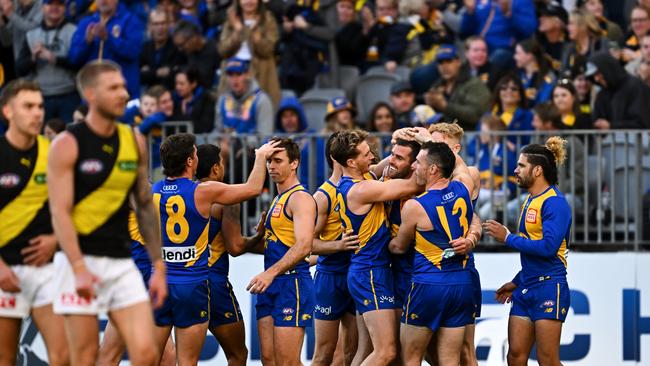
HOW THE PIES PLAN TO GO VERTICAL
Collingwood is plotting to commercially reinvent itself by building separate, vertical businesses within its club structure.
The brains behind the operation are three enterprising businessmen – Jeff Browne (president), Craig Kelly (chief executive) and long-time TV executive Ian Paterson (chief commercial officer).
A medical science facility, Performe, recently opened at club headquarters while talks are advancing to place exclusive content on its website behind a paywall.
“We’ve got to be good at Collingwood at building businesses,” Browne said.
“The traditional model is that your primary source of income is membership, and it still will be.
“But what I want to do at Collingwood is set up all sorts of other ways to connect with the club, even if you’re not a member.
“I’m talking about a subscription service where people can pay a small amount of money per month, people who can’t afford a membership at this stage, and they can be served some exclusive content in relation to the club and what’s happening.
“Say for $5 a month you can get some insights and access. It’s not at the same level as membership, but it still connects people with the club.
“There’s over a million people that follow Collingwood, but we’ve got 106,000 members. You want to be able to connect with all of those other supporters and start them on the membership journey.
“You’ve got to throw out your traditional thinking on this and say, ‘Well, how do we grow our connection base? And off the back of that how do we grow our revenue base?’”

HOW CLUBS CREATE NON-TRADITIONAL STREAMS OF INCOME
The premise for revenue diversification is simple. As most clubs push away from poker machines, they can stabilise their business by creating non-traditional streams of income.
“The footy revenues are obviously your bread and butter,” Swann said.
“But they’re dependent on you winning as well. So the more you can diversify your income, the more stable the business of the football club is.
“It can make a 20 per cent difference if you’re playing well versus not. Memberships, merchandise, attendances, gates – all the fundamentals. They certainly ramp up if you’re winning.”
Collingwood lived that this year. The premier’s crowds rose by 50 per cent compared with 2017 (46,815 to 70,333).
St Kilda boss Simon Lethlean valued those MCG gate takings at $1 million per game for the Pies.
“We don’t live in that space. We live in a space where we have 20,000 people at Marvel,” Lethlean said.
Richmond boss Brendon Gale prioritised revenue diversification a decade ago because the Tigers, as an MCG tenant, operated in a “volatile” business environment, and needed to de-risk their revenue.
“Our revenue is largely based on stadium returns,” Gale said.
“With a huge stadium like the MCG, where you’ve got all this inventory, it can rise or fall depending on the performance of your team.
“A lot of teams around the world have a smaller stadium that suits their market and they just fill it every week, so it’s quite predictable.
“If you’ve got a stadium with 25,000 people you know you’re going to fill it every week. You can set and forget almost.
“With Richmond, because of our size and scale, you really rise when you’re flying and you can create that sense of scarcity and drive demand.”
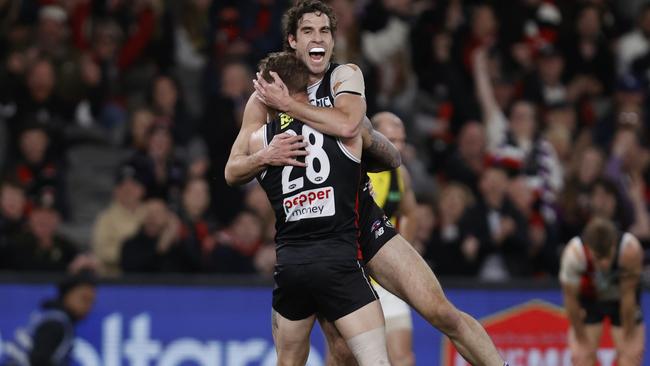
WHY ALL EYES WERE ON PUNT RD
The AFL world studied Punt Rd with dollar signs in its eyes when the Tigers made the plunge first.
Footy’s addiction to poker machines was not yet full-blown, but people in power could sense what was coming and the Tigers were about to deliver a case study on attempting to replace that revenue.
The Tigers created a subsidiary company in 2015 called Aligned Leisure that bids for local government contracts to manage their recreational, leisure and aquatic facilities.
Gale said whatever the business venture was it had to marry up with what your football club stood for.
“It’s got to be a venture aligned to your purpose as a footy club and it‘s got to be aligned to your values,” he said.
“It‘s got to sit with it well, and at the end of the day a footy club is largely about sport, participation, health and fitness, and running aquatic centres and leisure facilities is about health, participation and exercise.
“So (Aligned Leisure) goes to the DNA of us as a football club.”
Aligned Leisure is a thin operation without significant overheads that runs off the back of Richmond’s existing operations at Punt Rd.
Last year it generated $32.5 million, expanding to 1200 employees across 39 locations in eight municipalities.
Financial documents lodged with the Australian Securities and Investments Commission showed the Tigers’ stadium earnings, membership and merchandise sales totalled $28.6 million.
Aligned Leisure had outgrown the earning power of Richmond’s core business.
But the fact the Tigers remain one of four Victorian clubs with poker machines indicated just how hard it was to actually fill the coffers.
Gale warned supporters not to be misled by Aligned Leisure’s raw revenue data.
“The nature of the business is when you win a contract you pick up all the revenue, and you pick up all the expenses, including your management fee,” he said.
“What that means is it inflates the top-line revenue. For example, just before COVID we nearly hit $100 million total club revenue.
“But operating under a tight profit margin means that our bottom line looks entirely different”.
AlburyCity and Wodonga Councils agreed to play Aligned Leisure $3.2 million for a five-year aquatic facilities management contract in 2018 – $600,000 operational costs and a $40,000 management fee annually.
But the contract stated: “Profits will be subject to a 50/50 profit share arrangement with AlburyCity. However, based on typical margins for aquatic facilities, any profit share returns are not expected to be substantial”.
In last year’s financial report the Tigers banked $4.8 million from gaming and hospitality and $32.5 million from health, fitness and community (Aligned Leisure).
It makes you wonder how much profit actually dropped into their bank from both of those streams?
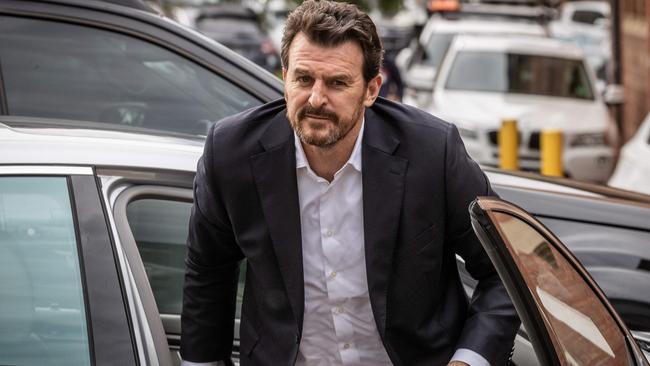
The Tigers poured their heart and soul into the venture as they set out to disrupt a market that had previously been dominated by YMCA and Belgravia Leisure Centres.
Its application for the Shire of Cardinia contract in 2016 was no elevator pitch.
“It took us three to four years to get ourselves in a position to even bid,” Gale said.
“The documentation that was required to bid, mate, we’ve got boxes and boxes and boxes of documents.”
Aligned Leisure had won its first contract, and YMCA was given 16 weeks to vacate as eight facilities were placed under new management.
“If you walk into one of those (Aligned Leisure) facilities you’ll see no connection with the Richmond Football Club,” Gale said.
“But we said we’ll add value in a way that our competitors can’t. It’s all Aligned Leisure uniforms and branding – but what we’ll do in the Shire of Cardinia, which was our first contract, we said as part of this deal we’ll go into every primary school.
“We deliver community health wellbeing programming aligned to your needs, and we‘ll do that for nothing.
“We‘ll build that into the program and we’ll lever it. We’ll go in as Richmond and we’ll go in as the AFL and we’ll leave a ticket offer.
“It’s very competitive, but we felt we had a value-add, we won our first contract and it’s gone from there.”
Gale said the story of revenue diversification was the story of poker machines.
“I’m not going to be self-righteous because we have a (gaming) venue, and it’s been very important to the club over the years,” he said.
“For many years we, like a lot of clubs, probably haven’t been able to do without.
“So we felt this was a way to hedge against that as well. But we’re not quite there yet.”
By 2017 poker machines had become footy’s $100 million annual dilemma.
North Melbourne was one-out when in 2008 it turned its back on pokies. It has proven to be a calculated act of social leadership that will be hard to top.
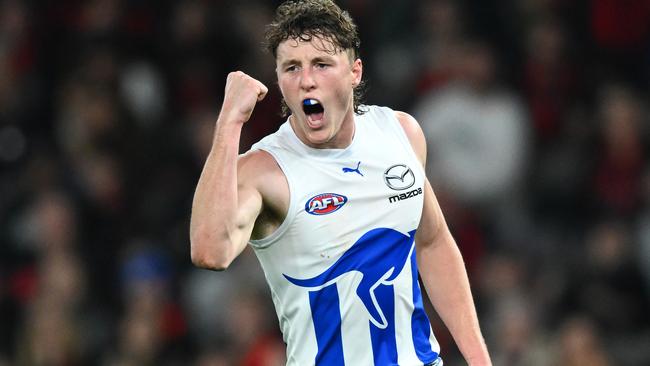
Collingwood, Geelong, Hawthorn, Melbourne and Western Bulldogs have also weened themselves off poker machines over the past four years.
However one football club’s boss claimed the Dogs had not truly exited gaming because they were still the landlord of a pokies venue.
The Dogs sold the last of their machine licences to Melbourne Racing Club – but they do still pocket rent at Dromana’s Peninsula Club.
The Hawks’ exit from gaming gained them $32 million for a future fund and construction of the Kennedy Community Centre, which is sitting in a bank account accruing interest.
The Demons established a future fund using $23.7 million sale proceeds from Bentleigh Club.
But as AFL clubs have looked to get out of pokies, at VFL level Werribee, Williamstown, Port Melbourne and Southport are chips-in.
Port Melbourne’s No. 1 ticket holder is billionaire pokies king Bruce Mathieson and last year the club posted an eye-watering profit of $2,246,131.
Werribee’s 85 machines in Hoppers Crossing guzzled close to $18 million in 18 months. The club will create an extra 70 machines in Tarneit next year after overcoming Wyndham Council’s repeated attempts to block the project.
Four Victorian AFL clubs remain on what has become unpopular terrain – Carlton (290 machines) Essendon (190), Richmond (97), St Kilda (83).
When will the Tigers be ready to walk away from the Wantirna Club?
“At the moment we’ve just come out of litigation regarding our lease, which basically meant we had nothing to even sell,” Gale said.
“It’s something we’re continuing to look at. We’ll be making a decision that’s in the best interest of our members.”
More Coverage
Originally published as How AFL clubs are making money on projects and businesses that have nothing to do with football




